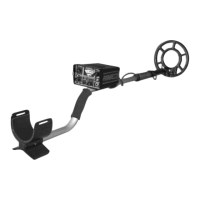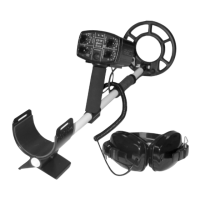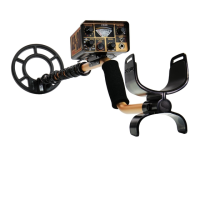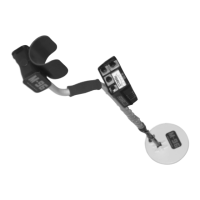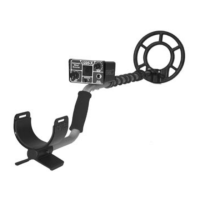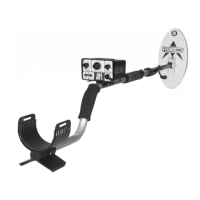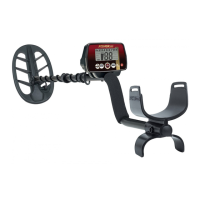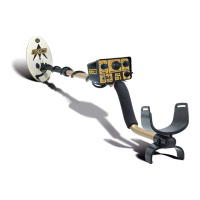10
1
2
3
4
5
6
CONTROL PANEL
1. VOLUME/OFF: Power on-off and volume control.
Volume is gradually increased from 1-5 settings. From
5-10, loud-target response is held constant while faint
targets continue to get louder.
2. DISC: In the 0-6 positions, the CZ-20 is in the target
mode, which is a silent, no-threshold, motion-
discrimination mode of operation with the ability to
identify and then ignore (“reject”) or accept many
kinds of small metal targets. In the AUTOTUNE position,
the CZ-20 is in an all-metal mode. In this mode, the
CZ-20 has a slightly wider and deeper search pattern,
however, it lacks the ability to discriminate or identify
and reject targets.
3. PINPOINT: A two-purpose, spring-loaded pushbutton.
When pushed and held, the CZ-20 goes into a no-
motion, all-metal mode for precise pinpointing. This
button is also used in conjunction with the GROUND
control during the ground-balancing procedure.
4. GROUND: Used to electronically cancel the effects of
wet salt and ground mineralization. Proper use of this
control will minimize false ground signals and ensure
that the CZ-20 is operating at its maximum potential
in just about any ground condition including wet,
ocean sand.
5. SENS (Sensitivity)/BATT TEST: In the extreme
counterclockwise position, the battery condition is
checked as indicated by a strong or weak tone and
the red LED’s.
6. LIGHT EMITTING DIODES (LED’s): Used to indicate target
Figure 7.
Control Panel
31
FALSE SIGNALS
handle most wet sand easily unless it’s black. See
Black Sand above. You should able to reduce the
number of false signals caused by salt water by
lowering your sensitivity and making sure you are
ground balanced properly.
7. Hot Rocks: Some rocks, by virtue of their high mineral
content, will be seen by metal detectors as a metal
target. In the Autotune mode, the CZ-20 will respond
to most hot rocks. Prospectors must learn to
distinguish between hot rock and nugget sounds.
In the target I.D. mode, certain types of hot rocks
will be automatically rejected at DISC = “0” and
virtually all other hot rocks will be identified as iron
or rejected at DISC = “1.”
8. “End of Swing:” Silent search motion detectors
often give false signals at the edges of the search
pattern, just as the coil stops and begins
accelerating back toward the operator. If this is a
problem, try one or more of the following:
a) Keep your sweep smooth, slow and low to the
ground.
b) Check your ground balance.
c) Lower your sensitivity.
d) Make sure your search coil is properly secured
and the cable connector is firmly tightened.
9. Digging Tool: If you’re carrying a metal sand scoop,
digging knife, or screwdriver, hold it behind your
back or keep it above your waist. Your CZ-20 is
sensitive enough to sound off each time you sweep
the coil beneath it.
10. Elongated Ferrous Objects: If you get two beeps
close together and can’t find either target, you may
be near a nail or some other long, ferrous object.
Fortunately, in most cases your CZ-20 will identify
these objects correctly. In all cases, the target will
be between the beeps, or if you sweep at right
angles to your original direction, you’ll receive a
single beep directly over the target.
